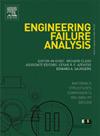Reinforced concrete interventions on the collapse mechanism of historical masonry structures with detailed finite element analyses: Kabasakal Mosque
IF 4.4
2区 工程技术
Q1 ENGINEERING, MECHANICAL
引用次数: 0
Abstract
This study aims to evaluate the seismic behavior of the historical Kabasakal Mosque in Gaziantep and to understand the effects of reinforced concrete (RC) elements added after the 1950s. Considering the increasing threats to Turkey’s cultural heritage structures, the significance of scientific approaches in the preservation of historical buildings is emphasized. Initially, a detailed finite element model (R-Model) representing the current state of the mosque was developed. The material properties of the reinforced concrete elements were defined based on literature research and material behavior of similar structures. Subsequently, to reconstruct the mosque’s original state, other historical masonry mosques from the same period and region were studied. The architectural similarities and typological features of these structures were compiled. Based on this data, another finite element model (O-Model), entirely composed of masonry elements representing the mosque’s original condition, was created. In both models, macro modeling techniques were employed, and geometric details and material properties were meticulously defined. As part of the modeling studies, modal analyses, nonlinear pushover analyses, and nonlinear time-history analyses were conducted. Modal analysis results revealed that reinforced concrete elements increased the structural stiffness, elevating the modal frequencies and thereby altering the vibration characteristics of the structure. Pushover analyses showed that while reinforced concrete elements contributed marginally to the horizontal force capacity of the structure, they partially reduced displacement demands. Dynamic analyses indicated that the R-Model exhibited a more uniform stress distribution and improved damage mechanisms due to the reinforced concrete elements. However, in scaled 1.25 analyses, significant damage mechanisms were observed in both O-Model and R-Model. This finding demonstrates that while reinforced concrete interventions provide some level of improvement for the structure, they offer limited protection under large-scale earthquake scenarios. Specifically, the R-Model exhibited a “box effect” created by the reinforced concrete slab between the narthex and the north wall, preventing localized collapses. Nevertheless, critical damage mechanisms persisted in other regions of the structure. The results underscore the necessity of meticulous planning for strengthening interventions in the preservation of historical structures. This study highlights the effectiveness of finite element modeling techniques in analyzing historical masonry structures and shows that reinforced concrete elements improve local damage mechanisms. However, the impact of strengthening methods on the global seismic performance requires further investigation.
求助全文
约1分钟内获得全文
求助全文
来源期刊

Engineering Failure Analysis
工程技术-材料科学:表征与测试
CiteScore
7.70
自引率
20.00%
发文量
956
审稿时长
47 days
期刊介绍:
Engineering Failure Analysis publishes research papers describing the analysis of engineering failures and related studies.
Papers relating to the structure, properties and behaviour of engineering materials are encouraged, particularly those which also involve the detailed application of materials parameters to problems in engineering structures, components and design. In addition to the area of materials engineering, the interacting fields of mechanical, manufacturing, aeronautical, civil, chemical, corrosion and design engineering are considered relevant. Activity should be directed at analysing engineering failures and carrying out research to help reduce the incidences of failures and to extend the operating horizons of engineering materials.
Emphasis is placed on the mechanical properties of materials and their behaviour when influenced by structure, process and environment. Metallic, polymeric, ceramic and natural materials are all included and the application of these materials to real engineering situations should be emphasised. The use of a case-study based approach is also encouraged.
Engineering Failure Analysis provides essential reference material and critical feedback into the design process thereby contributing to the prevention of engineering failures in the future. All submissions will be subject to peer review from leading experts in the field.
 求助内容:
求助内容: 应助结果提醒方式:
应助结果提醒方式:


